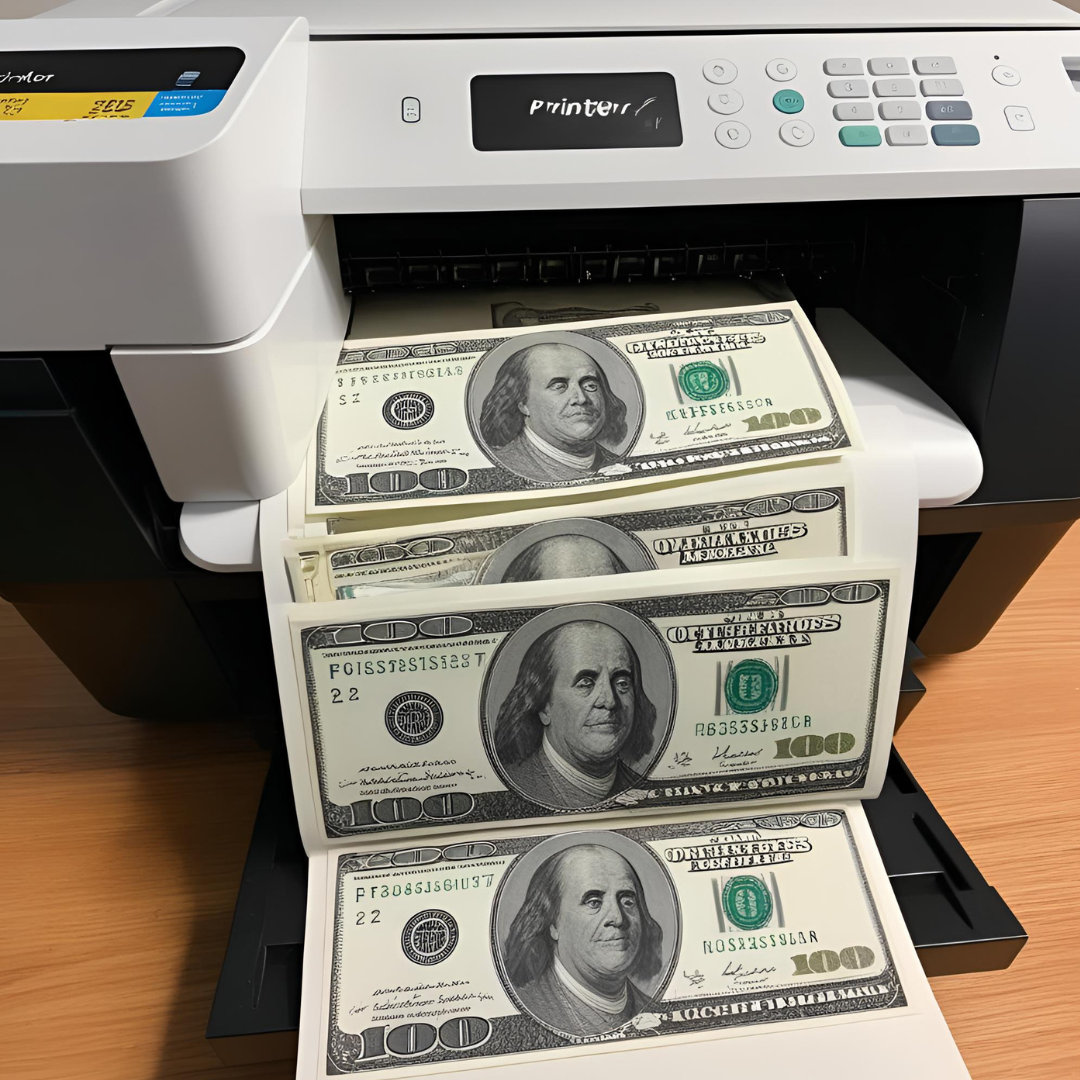Modern Monetary Theory (MMT) is often either dismissed as reckless or praised as revolutionary. Critics argue it’s an inconsistent theory that gives governments a free pass on money handouts. But if we take a closer look, there are valuable insights to be gained from MMT.
🔄 The Core Idea of MMT
MMT challenges traditional economic thought by arguing that taxes don’t primarily fund government spending but instead serve as tools for controlling inflation, managing demand, and redistributing wealth.
📉 Deficits Aren’t the Real Problem
According to MMT, deficits are fine as long as inflation remains under control. The government should focus on full employment, not arbitrary debt limits.
🤔 Why This Makes Sense
Governments (ok, central banks, but really they work together…) that issue their own fiat currency (like the US) can create money. We saw this in action during COVID—massive stimulus spending without immediate economic collapse nor skyrocketing inflation.
They don’t need to “collect” taxes or borrow to spend—they can simply adjust balance sheets digitally. Don’t believe me? Believe former Fed Chair Ben Bernanke, who, when asked if banks were bailed out using taxpayer money during the 2008 financial crisis, said:
“It’s not tax money. The banks have accounts with the Fed, much the same way that you have an account in a commercial bank. So, to lend to a bank, we simply use the computer to mark up the size of the account that they have with the Fed.”
So, if it wasn’t tax money, why wasn’t it inflationary? Because the money stayed within the bust bank instead of being lent out. (If not in circulation -> no inflation.) If the shareholders (who own the company and are responsible for it) had been forced to bear the cost, there would have been less money in circulation. But hey, why make the money people in charge pay when you can just enter digits in the balance sheet?
Yes, correct, because it is unfair, and we should have a public debate about when and for which causes and clientele such stunts should be pulled.
(And yup, that does mean that the German so-called debt-brake law is essentially rubbish. (Some politicians know but won’t admit to it because they know how widespread monetary misconceptions are among voters.) Some say so openly. But i ll get back to that in a different post)
🕵️ So What’s Wrong with MMT?
While MMT is technically correct about the ability of sovereign governments to print money, implementation is another story.
1️⃣ Psychological & Market Reactions People don’t believe that money can just be created, and if markets fear inflation, it might very well become a self-fulfilling prophecy.
2️⃣ The IMF & Global Constraints If a country borrows in foreign currency, it’s forced to adhere to the fiscal discipline of institutions like the IMF and World Bank, regardless of domestic unemployment or economic instability. And they believe in austerity…
3️⃣ Inflation Isn’t Guaranteed, But It’s a Risk If money flows into productive investments (infrastructure, technology, manufacturing), inflation doesn’t necessarily occur—we get growth instead.
But if governments fund unproductive projects, inflation will happen. Critics argue that politicians won’t resist the temptation to overspend or spend on political supporters, which is why the myth that money creation is inherently limited is still around.
💡 The Real Debate We Should Have
Rather than pretending money creation wouldn’t be an option, we should ask: ✅ What should we fund as a society? ✅ At what cost? ✅ Who benefits, and who pays?





